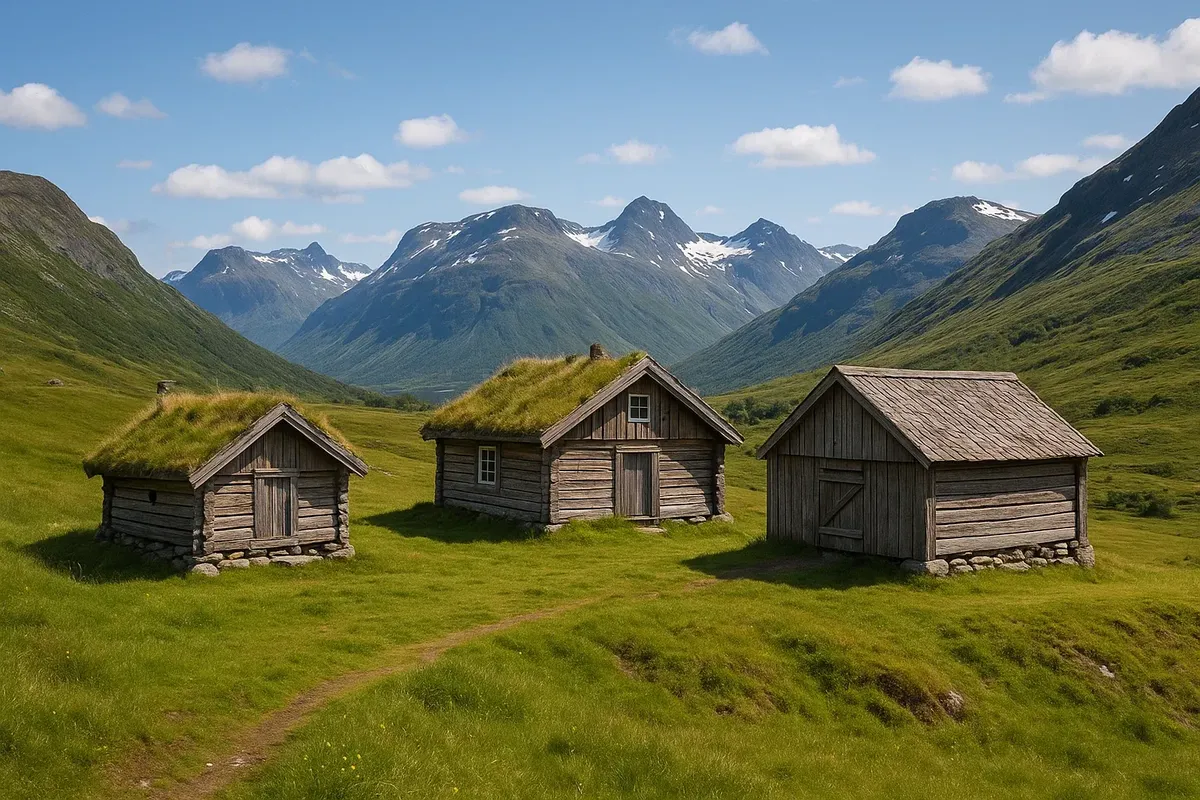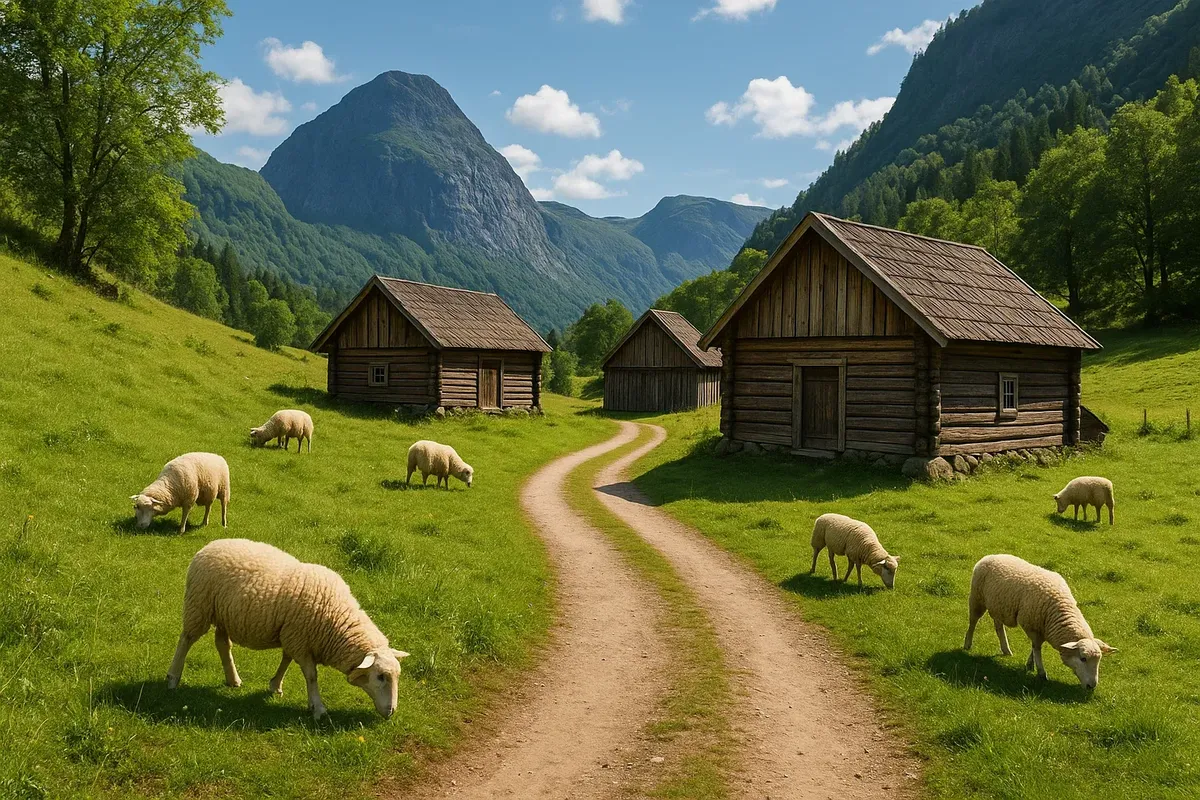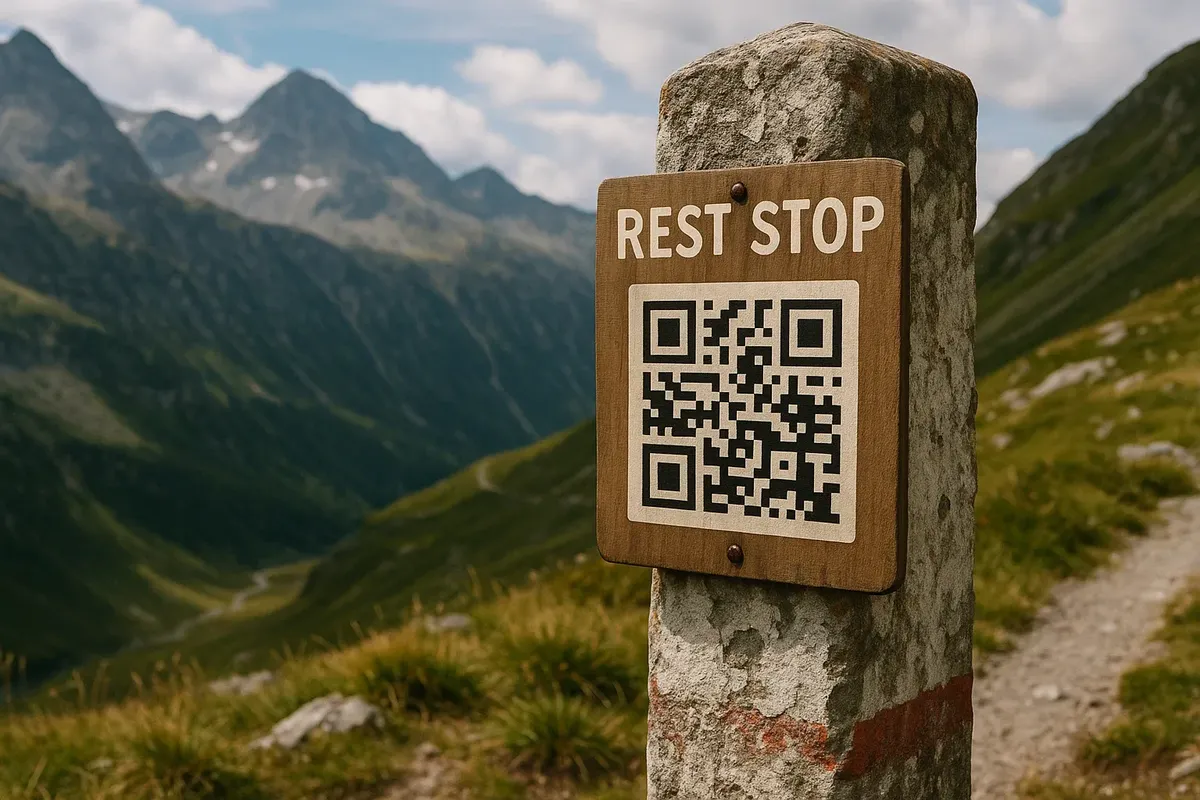🌾 Farmers' historical trails: to barns and summer pastures 🥾
Get ready for the adventure of a lifetime as you walk in the footsteps of history along the historical routes of Norway's national parks! It's a journey through time like no other! Get ready for a journey back in time as you follow in the footsteps of our ancestors along ancient farm tracks. You'll be amazed to discover traditional barns, summer pastures and old ponds that have stood the test of time. Feel the spirit of the past and discover unique cultural sites with the help of modern QR codes on border posts.

Why are Jotunheimen and Femunnsmarka National Parks popular for historical trails?
Jotunheimen and Femunnsmarkeid are areas with a long history of farming and raising animals. Here, old farm trails that used to lead to traditional summer pastures (setra), barns and ponds have been kept in their original state. These places let you enjoy nature and learn about the culture and way of life of Norwegian farmers in the past.
What are 'pølse-stanser' and why are they important on historical trails?
Pølse-stanser are places where farmers used to stop to rest and eat sausages. On modern routes, you'll find signs or QR codes where you can learn about the history of the place by reading the information on your smartphone.
Which are the old staves and setters on the routes?
Stavens and seters are old summer farms and pastures where farmers used to take their animals to graze. Many of these have now been restored and turned into open-air historical monuments, allowing travellers to see what life was like for ancient farming communities.

What do the QR codes on the Swedish-Norwegian border posts mean?
QR codes are located on border posts between Sweden and Norway. Tourists can use their smartphones to access historical information about the region, including border conflicts, trade and culture. This makes the walk more informative and interesting.

Which animals can you find along historical routes?
On the historical routes, you can see animals like sheep and cows, as well as wild animals such as reindeer, moose and foxes. Stay away and be quiet, and respect the local nature and traditions.
Which campsites and huts are close to historical routes?
Gjendesheim in Jotunheimen and Røros Turisthytte near Femunnsmark are great places for tourists to visit if they are interested in historical routes. They are close to important historical sites and offer comfortable accommodation where you can experience the local culture.
What should I do to get ready for a trip along historical trails?
Bring comfortable shoes, food and water, and a smartphone with an app that can read QR codes. It's also a good idea to have a map of the area and a GPS, as many historical trails are not very well marked.
What are the rules of Allemannsretten that should be followed on historical trails?
With Allemannsretten, you can walk along historical trails as you please. But please be careful not to damage ancient buildings, do not light fires outside the designated areas, and always take your rubbish with you.
There are lots of old farm trails. They're a great way to get out and about and learn about the history of Norway. If you use modern technology to follow old trails, you'll find some amazing places. You'll also get to experience the local history and traditions.
Have you already explored Norway's historical routes? Let us know what you thought, share your stories and add your photos in the comments below! We'll be publishing the best stories and photos in our catalogue to inspire other travellers to have cultural adventures in Norway's national parks.





2 comments
Log in to leave a comment